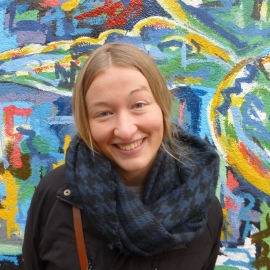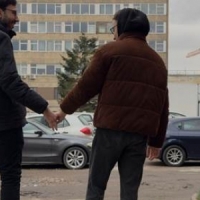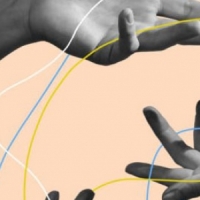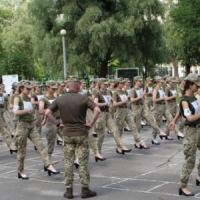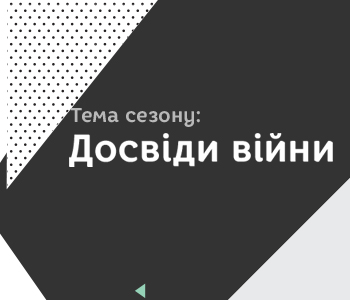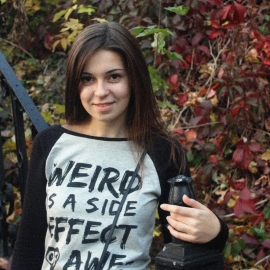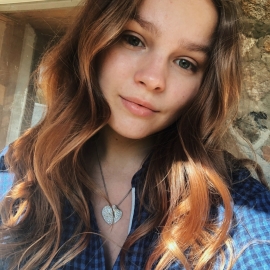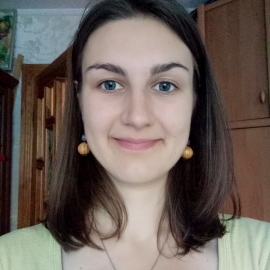Nash Mir (2011). One Step Forward, Two Steps Back. Situation of LGBT in Ukraine in 2010-2011
Getting off to a good start, Ukraine was the first post-Soviet country to decriminalize homosexual relations. However, Ukraine is no longer so progressive when it comes to LGBT-rights. In Kyiv, about two thirds of the general population consider homosexuality a perversion. About 60 percent of LGBT-people often face physical violence, sexual assaults, hate motivated crimes and discrimination within the past three years. For LGBT-people whose sexuality is publicly known, 89 percent had experienced discrimination. The most common spheres of discrimination are in the workplace and from police officials. Most homosexual people in Ukraine do not trust state authorities and the government. 41 percent of the survey respondents have experienced violence or harassment from people in their close surroundings. In 18 percent of the cases, the harassment was on the part of family members either limiting the respondent's freedom of movement or kicking them out of home. The most common harassments are insults (58 percent), disregard and debasement (32 percent) and threat of physical violence (24 percent). In 13 percent of the cases, respondents were physically attacked. The report further offers statistics and excerpts from interviews with transgendered people about their experiences of discrimination in the labour market.
Nash Mir. (2009). An Investigation into the Status of Same-Sex Partnerships in Ukraine [Online] Available at: http://gay.org.ua/publications/same_sex_partnership-e.pdf [Accessed 19 Sep. 2019]
This report from 2009 focuses on the everyday life of same-sex couples in Ukraine, investigating social identities of same-sex partners as well as needs and values of the couple. The researchers ran a survey on homosexual and bisexual people, asking them about their same-sex relationships. 47 percent of the survey respondents co-live with their same-sex partner. In 2000, only one third co-lived. The study shows that female couples are more likely to co-live, whereas male couples often live separately. Furthermore, couples in villages and smaller cities are less likely to live together than couples in the bigger cities. One tenth of the same-sex couples in the survey are raising a child together. More than half of the respondents who have no children would like to have children. Of bisexuals in the sample, 13 percent did not wish to have children. The same goes for about one third of homosexuals. About 75 percent of the respondents consider monogamous relationships the ideal model for same-sex couples. Same-sex couples are challenged by condemnation from family and society at wide, and for instance adopting the child of a partner is challenging for about half of the respondents. According to this survey, men are more likely to face condemnation from relatives (61 percent) than women (39 percent). Also, 86 percent of men report problems with receiving pensions of a deceased partner. This is reported by 14 percent of women. The same goes for regulating property rights, which is a challenge for 65 percent of men and 35 percent of women. Though this study gives some insight in the demography of same-sex families, it is investigated from a quite normative stance, suggesting that marriage, monogamy and children leads to higher life satisfaction. The data collection and data presentation in this study is somewhat value laden - heteronormative and assuming - and sometimes imprecise in commenting on survey findings. With that being said, the report does provide some knowledge within an else way quite unstudied field.
Martsenyuk, T. (2012) The State of the LGBT Community and Homophobia in Ukraine. Problems of Post-Communism, vol. 59, no. 2, March/April 2012, pp. 51–62
Though homosexuality was decriminalized in Ukraine in 1991, homophobia in Ukrainian society remains a great challenge. Though all LGBT-people are marginalized, especially bisexuals, transgendered people and a variety of other gender identities are widely unrecognized. The Ukrainian LGBT-community is represented by a number of NGOs, which are also the only generators of knowledge about LGBT-issues. In this article, Martsenyuk reviews existing studies of LGBT-issues in Ukraine and supplements it with her own regional research (nine interviews with LGBT-activists in Kyiv, Kharkiv, Lviv, Donetsk and Cherkasy). Secondly, she evaluates the Ukrainian LGBT-community’s impact on the societal perception of homosexuality. Furthermore, she discusses the way state officials, politicians, NGOs, media, and the church support and practice homophobia. Public opinion surveys on attitudes toward homosexuality reveal that Ukrainians were more tolerant in 2002 that in 2007. For instance, the number of people who would not grant homosexuals the same rights as heterosexuals increased from 34 percent to 47 percent. The proportion of Ukrainians opposed to letting homosexuals raise children increased from 49 percent to 60 percent. Overall, more women than men are in favour of equal rights regardless of sexuality. The same goes for people with a higher education and young people in their 20s. However, teenagers became half as tolerant towards homosexuality between 2002 and 2007, which is concerning from a generational perspective. Citizens of western (and northern) Ukraine hold more conservative views on gender and sexuality. This intolerance might be due to these regions being more religious than other Ukrainian regions. Martsenyuk identifies two factors that may have led to greater homophobia in Ukraine: The increase in LGBT-activism and the negative portrayal of LGBT issues in the media, political groups, the church and some NGO’s, such as ‘Love Against Homosexuality’. According to Martsenyuk, it would be strategic of the LGBT-community to link homophobia with the broader issue of xenophobia (racism, ageism, sexism, etc.) to promote greater tolerance in Ukrainian society at large.
Martsenyuk, T. (2016). Sexuality and Revolution in Post‐Soviet Ukraine: LGBT-Rights and the Euromaidan Protests of 2013–2014. Sexuality and Revolution
Based on 20 interviews with LGBT-rights activists who participated in the Maidan-protests, Martsenyuk examines the protests’ positive and negative consequences for LGBT-movements in Ukraine. Seemingly, the radicalization and militarization of the protests made the promotion of LGBT-rights less of a priority, and many protesters considered the LGBT-agenda untimely. This view was also held by many LGBT-activists, who did not find it meaningful nor safe to distinguish between the LGBT-community and other Ukrainians fighting for freedom. Many of the LGBT-activists interviewed argue that promoting LGBT-rights in the Maidan-protests would have been unsafe. However, some hold the view that the Euromaidan-sphere was more LGBT-friendly than Ukraine in general. The participation of the LGBT-movements in the Maidan-protests was characterized by invisibility, but certainly not by inactivity. Though the LGBT-cause was not in the forefront, the protests held potential for changing the Ukrainian system and for Ukraine to lean towards European integration rather than pro-Russian homophobia. Martsenyuk observes that the interviewees have a somewhat uncritical and utopian perception of Western LGBT-politics. According to Martsenyuk, they risk ignoring the homophobic and pacifying mechanisms that are present not only in Russia, but also in Europe. Instead of relying so heavily on this East-West binary, she argues for the LGBT-community to make Ukrainian LGBT-interests their centre of attention.
Martsenyuk, T. (2011). National Peculiarities of Homophobia in Ukraine [Online] Available at: http://ukrainewatch.wordpress.com/2011/08/03/national-peculiarities-of-homophobia-in-ukraine [Accessed 19 Sep. 2019]
Morality, demography and national threat are frequently discussed when talking about sexual identities in Ukraine as of 2011. One of the largest Ukrainian movements working against homosexuality is Love against Homosexuality. This movement argues that general knowledge about homosexuality contradicts Ukrainian national interests due to HIV/AIDS-infection, demographic crisis intensification, destruction of the family as an institution as well as elimination of constitutional rights and freedom of religion for all citizens. The same arguments are seen in political spheres, for instance in the party Svoboda. In legal acts in Ukraine, condemning homosexuality seems to be used as a strategic tool to make it easier to pass laws that regulate for instance public morals, media and criminal codes.
Martsenyuk, T. (2012). Chapter 15: Ukrainian Societal Attitudes towards the Lesbian, Gay, Bisexual, and Transgender Communities. In: O. Hanivsky, and A. Salnykova (eds.) Gender, Politics and Society in Ukraine 2012. University of Toronto Press
Mainly focusing on lesbian and gay minorities, Martsenyuk gives an insight in Ukrainian homophobia and attitudes towards LGBT-communities. Though not so present in the Western part of the country, there are many active LGBT-organizations in Ukraine: 24 officially registered organizations and 20 informal LGBT-groups as of 2012. According to Gay Forum in Ukraine - though there are no official national data on the matter - there are 800,000-1,200,000 LGBT-community members in Ukraine. An estimated 100-200,000 form same-sex couples. According to data from Kyiv International Institute of Sociology, 33 percent of Ukrainians agreed that homosexuals should be treated like everyone else in 1991. In 2006, 15 years later, the percentage was practically unchanged. Other data shows that tolerance has decreased between 2002 and 2007. The tolerance-levels are thus concerning. Martsenyuk argues that the following three things influence the Ukrainian intolerance towards LGBT-communities:
- The decriminalization of homosexuality in 1991 and the post-Soviet LGBT-activism.
- Hate speech and negative public discourse from politicians, media and the church.
- Homophobic initiatives like the so-called movement 'Love against Homosexuality'.
These elements are exemplified and explored in the chapter. Besides cultural and systemic changes from the highest political level, Martsenyuk argues that sociological research on discrimination could be helpful for ensuring equality in for instance employment and education. Furthermore, to increase tolerance, LGBT-organizations should cooperate actively with the research community in order to generate better research and enhance people’s knowledge about LGBT-communities.
Plakhotnik, O. (2019). Imaginaries of Sexual Citizenship in Post-Maidan Ukraine: A Queer Feminist Discursive Investigation. PhD thesis The Open University
Using queer feminist discourse analysis, Plakhotnik examines how LGBT+ communities position themselves in relation to hegemonic discourses of state and nation in Ukraine. She identifies an intensification of sexual citizenship claims during and after Maidan 2013/14. According to Plakhotnik’s studies, the dominant discourse of LGBT-sexual citizenship – homopatriotism – became a form of homonormativity. This positioned LGBT+ communities as patriots and ‘good citizens’ and allowed them to negotiate with the state for recognition. Furthermore, homopatriotism in Ukraine marked Eastern Europe as lacking behind of progressive Western LGBT+ models. Grassroots queer activism see the need for enabling alternative imaginaries of belonging, identity and solidarity, because the concept of sexual citizenship easily slips into heteronormativity, homonormativity, neoliberalism, militarism, racism, ableism, misogynism and Western-centredness. Such mainstream LGBT+ politics may thus fail to recognize a wide array of citizens.
Tamara Martsenyuk, T. (2013). Ukraine Gender Roles in LGBT-Families in Ukraine: Idealization and Reproduction of Heteronormativity. In: Manifold Angles of Gender. Heinrich Böll Stiftung South Caucasus Regional Office
Based on interviews with the members of seven Ukrainian LGBT-families, Martsenyuk sheds light upon the social practices of LGBT-families and how they navigate between gender roles in a society where heterosexual relationships are not only the norm, but also the ideal. The interviews show elements of both traditional and egalitarian gender roles in LGBT-families. Though being of the same sex, functional and somewhat gendered divisions of work are seen in many LGBT-families as well, though there is a general understanding of the partners being equal. The Ukrainian state does not recognize queer-families and same-sex marriage is not allowed. The interviewees describe a necessity to modify or disguise their queer-identities to gain legitimacy and acceptance in society.
Teteriuk, M. (2016). Between ‘the Russian World’ and ‘the Ukrainian Nation’: Kyiv Pride before and after Euromaidan
In this article, Maria Teteriuk uses Kyiv LGBT Pride 2013 and 2015 to analyse the transformations of LGBT-politics in Ukraine before and after Maidan. Kyiv Pride was launched in 2012 as a series of public events on LGBT-issues, but the march was cancelled by the organizers due to threats and no police-protection for participants. The first march in 2013 and the second in 2015 were realized in quite different political situations. The march in 2013 received little support from society in general, and it was attempted interrupted several times. Due to a complicated registration process, only 50 people attended the march, whereof half were European officials. Within the LGBT-community, the exclusivity of the event was highly criticized. In 2015, 250 people participated, and both support from civil society and attacks from oppositional groups were intensified. Teteriuk argues that the increased support in due to an adaptation of European values in the light of the Russian invasion of the Crimea. Homophobia is thus branded as an expression of pro-Russian attitudes.
